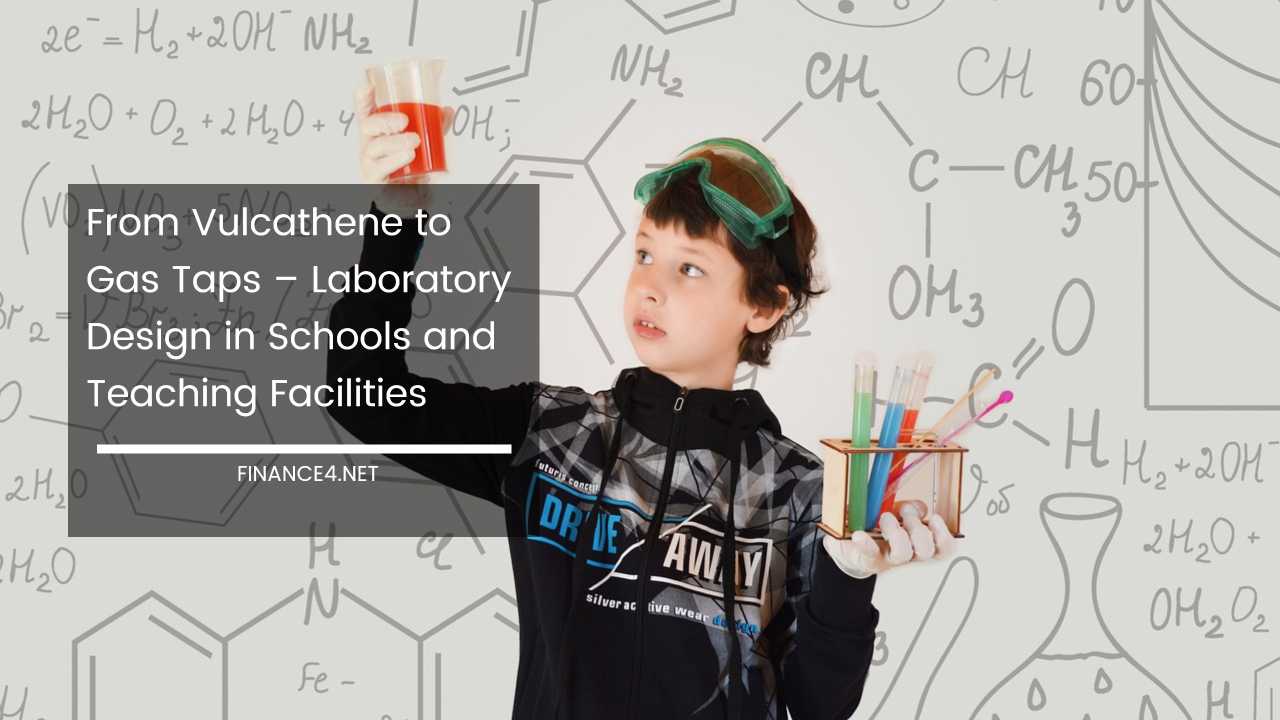From Vulcathene to Gas Taps – Laboratory Design in Schools and Teaching Facilities

From Vulcathene to Gas Taps – Laboratory Design in Schools and Teaching Facilities
Laboratory design in educational settings, particularly in schools and teaching facilities, demands meticulous attention to detail, especially in matters of health and safety.
The unique nature of these environments necessitates a delicate balance between realism and precaution to ensure optimal learning outcomes while safeguarding the well-being of students and educators alike.
Introduction to Laboratory Design in Educational Settings:
Laboratory spaces in schools and teaching facilities serve as hubs for hands-on learning, experimentation, and scientific inquiry.
Unlike professional research laboratories, these settings cater to students at various stages of their academic journey, from primary education to advanced studies.
As such, the design considerations must accommodate a diverse range of educational objectives, safety requirements, and pedagogical methodologies.
Balancing Realism and Safety:
Designing a laboratory for educational purposes requires striking a delicate balance between realism and safety.
While it’s essential to simulate real-world laboratory conditions to prepare students for future careers in science and research, it’s equally vital to implement stringent safety measures to protect inexperienced learners from potential hazards.
For instance, while professional research laboratories may adhere to strict safety protocols, including the use of specialized equipment and advanced containment measures, such measures might be impractical or overwhelming in educational settings.
Therefore, designers must tailor safety features to suit the educational level and proficiency of the students, ensuring a conducive learning environment without compromising on safety standards.
The Role of Teaching Stations:
A fundamental aspect of laboratory design in educational settings is the integration of dedicated teaching or demonstration stations. Positioned prominently at the front of the classroom, these stations serve as focal points for instructional activities, providing educators with a centralized space to conduct experiments, demonstrations, and lectures.
The design of teaching stations often involves the incorporation of specialized equipment, interactive displays, and ergonomic features to enhance the teaching experience.
Additionally, the layout of the station may be optimized for visibility, with elevated platforms or adjustable heights to ensure that all students have a clear view of the demonstrations.
Moreover, the strategic placement of teaching stations between student workstations and storage areas containing hazardous substances serves both instructional and safety purposes.
By positioning the instructor at the forefront of the laboratory space, students benefit from direct supervision and guidance, while potential risks associated with hazardous materials are mitigated through controlled access and oversight.
Infrastructure and Safety Protocols:
While the overarching goal of laboratory design in educational settings is to facilitate experiential learning, safety remains paramount. As such, the infrastructure of these facilities must adhere to rigorous safety protocols and industry standards to minimize risks and prevent accidents.
Common safety features include the use of specialized materials such as Vulcathene pipes, chemical-resistant sinks, and durable fittings designed to withstand the rigors of laboratory use. Additionally, emergency measures such as eye wash stations, fire extinguishers, and emergency showers may be installed to address unforeseen incidents promptly.
Furthermore, the layout and organization of the laboratory space play a crucial role in enhancing safety and efficiency.
Clear signage, designated work areas, and proper storage facilities for hazardous materials contribute to a well-organized and hazard-free environment. Regular inspections, maintenance checks, and staff training programs are also essential components of an effective safety management system.
Adaptability and Flexibility:
Laboratory design in educational settings must be adaptable and flexible to accommodate evolving curricular requirements, technological advancements, and pedagogical trends. As educational methodologies evolve, so too must the design of laboratory spaces to ensure alignment with current best practices and educational standards.
Modular furniture, flexible layouts, and versatile equipment configurations allow for easy reconfiguration of laboratory spaces to meet changing needs and accommodate different teaching methodologies.
Additionally, integrating technology-enhanced learning tools, such as interactive whiteboards, digital microscopes, and virtual simulation software, can enhance the learning experience and facilitate inquiry-based learning.
Customization for Different Educational Levels:
The design of laboratory spaces must be tailored to suit the specific needs and requirements of students at different educational levels.
For instance, introductory science courses may require access to a wide range of equipment and resources to provide students with a broad foundation in scientific principles and methodologies.
As students progress to more advanced levels of study, the focus may shift towards specialized areas of inquiry, requiring tailored laboratory setups and equipment configurations.
By aligning the design of laboratory spaces with the educational objectives of each course or program, educators can create immersive learning environments that foster curiosity, critical thinking, and scientific inquiry.
Integration of Sustainability Practices:
In addition to safety and functionality, laboratory design in educational settings should also prioritize sustainability and environmental stewardship. Incorporating energy-efficient lighting, water-saving fixtures, and eco-friendly materials can reduce the environmental footprint of laboratory operations and promote responsible resource management.
Furthermore, teaching laboratories present unique opportunities to educate students about sustainable practices and environmental conservation. By integrating sustainability principles into laboratory design, educators can instill in students a sense of environmental responsibility and encourage them to adopt sustainable practices in their future careers.
Final Thoughts:
In conclusion, laboratory design in schools and teaching facilities is a multifaceted endeavor that requires careful consideration of safety, functionality, adaptability, and sustainability.
By striking a balance between realism and safety, integrating dedicated teaching stations, implementing robust safety protocols, and customizing laboratory spaces to suit different educational levels, designers can create dynamic learning environments that inspire curiosity, foster inquiry, and prepare students for success in the scientific disciplines.
Moreover, by integrating sustainability principles into laboratory design, educators can instill in students a sense of environmental responsibility and equip them with the knowledge and skills to address the complex challenges facing our planet.
Through thoughtful design and innovation, laboratory spaces can become transformative spaces where students can explore, discover, and engage in the wonders of science and research.



